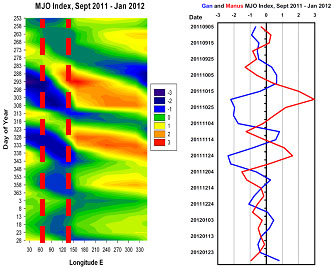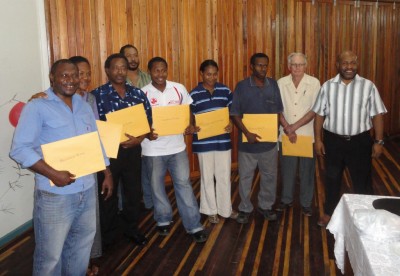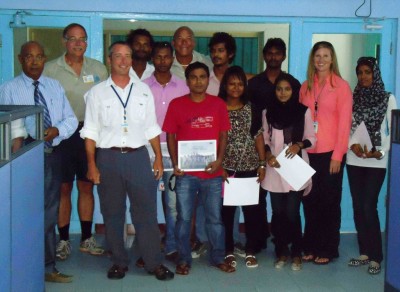
On March 31, the ARM Madden-Julian Oscillation (MJO) Investigation Experiment, or AMIE, came to an end, signaling the return of the second ARM Mobile Facility (AMF2) to the United States and a return to routine operations at the ARM site on Manus Island in Papua New Guinea.
In its first non-U.S. deployment, most of the two dozen baseline AMF2 instruments operated successfully throughout the campaign on Gan Island—part of the Adu Atoll in the Maldives. A few brand-new instruments at both island sites had early failures, and the remote locations made troubleshooting and finding parts for repairs extremely difficult. However, all but the scanning radars were repaired.
“This is a classic example of the difficulty in deploying complex and sophisticated instruments, especially for the first time, in such isolated environments,” said Brad Orr, AMF2 Site Manager from Argonne National Laboratory. “Fortunately, we know that the majority of the data set is very robust. That’s the beauty of building a degree of redundancy into the various measurement platforms.”
During the 6-month campaign, site operations on both Gan and Manus Island included eight-per-day weather balloon launches—every three hours; no easy feat! The overall success rate of sonde launches on Manus landed at 93 percent (without relaunch attempts) and on Gan Island at 98 percent (with relaunches when needed)—an incredible achievement under any circumstances.
Researchers have already begun analyzing the AMIE data set. Led by AMIE principal investigator Chuck Long from Pacific Northwest National Laboratory, numerous researchers involved in AMIE and its partner campaign, DYNAMO, presented preliminary data at the Atmospheric System Research Science Team Meeting in March 2012. All the presentations from that meeting will soon be available on the ASR meeting website, and the researchers are planning to hold a workshop in 2013 to review their collective data and research progress.
Special Recognition for Site Operations Teams

“You have managed a 92% of possible sonde rate up through February 21st. That is a phenomenal accomplishment, one you should be very proud of!” Long wrote.

“We could not have done this without your help,” said Ritsche, noting their dedication and dependability. “Your strong commitment to the AMF2 made this entire operation a success and I can’t thank you enough.”
Ritsche also gave a plaque to the Met Service on Gan, and on his way back to the United States, stopped in Male to give a plaque to the Met Service there.
Images from AMIE are available in the ARM Flickr set. AMF2’s next deployment is for the MAGIC field campaign, scheduled to begin in October 2012.

